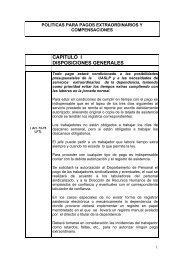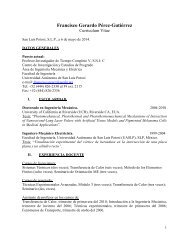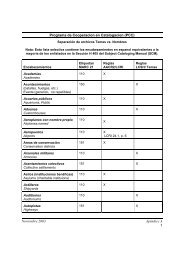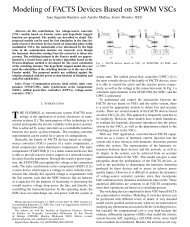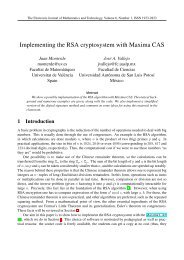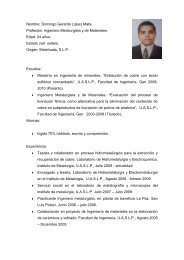Accenture Technology Vision 2013
Accenture Technology Vision 2013
Accenture Technology Vision 2013
Create successful ePaper yourself
Turn your PDF publications into a flip-book with our unique Google optimized e-Paper software.
Trend 2. Design for Analytics<br />
<strong>Accenture</strong> <strong>Technology</strong> <strong>Vision</strong> <strong>2013</strong><br />
provide unprecedented information<br />
about consumers, and sensors and<br />
embedded devices expand the ability<br />
to gather data into areas where<br />
computing power has never been<br />
before. The problem now becomes<br />
the absence of the right data.<br />
The IT world we live in today revolves<br />
around software applications.<br />
Businesses have developed data<br />
models to support application<br />
functionality, which is necessary<br />
for the application to do its job. If<br />
an e-commerce application needs<br />
to know what device a consumer<br />
is connecting from in order to<br />
authenticate the consumer, it<br />
captures that information; if the<br />
application doesn’t need to know,<br />
and knowing doesn’t support the<br />
user experience, it doesn’t. Most<br />
companies have also taken the next<br />
step—for example, they recognize<br />
that consumer information is<br />
valuable for future insight, so they<br />
capture more of it where they can.<br />
But generally they have not done this<br />
with any specific question in mind.<br />
So, when this data is repurposed<br />
as an input to make strategic<br />
decisions—such as entering a new<br />
market or pricing a new service—<br />
glaring information gaps often<br />
arise. The goal isn’t to amass data.<br />
It’s about enabling the business<br />
to answer a question, to create<br />
insight, and to use that insight to<br />
help the company achieve its most<br />
basic goals. With every data gap,<br />
enterprises miss an opportunity to<br />
make better decisions or improve<br />
how they run their business. To move<br />
forward, to answer the question, you<br />
have to adopt a data-first strategy<br />
and plug the data gaps.<br />
Plugging these data gaps—that is,<br />
getting the right data—requires<br />
a fundamental shift in design<br />
philosophy for how new applications<br />
“ The problem is no longer the absence of enough data. In fact, enterprises<br />
are now being flooded with new data, big-data tools mine countless new<br />
unstructured-data sources, social media now provide unprecedented<br />
information about consumers, and sensors and embedded devices expand<br />
the ability to gather data into areas where computing power has never been<br />
before. The problem now becomes the absence of the right data.<br />
”<br />
20



